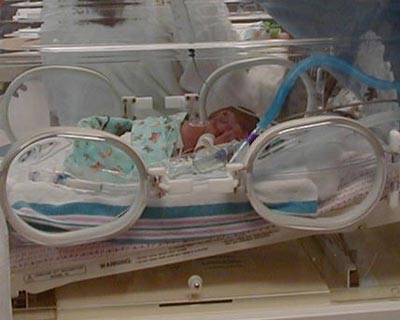From Micro-Preemie to Thriving Tween, Thanks to Ophthalmic Care
Dana is a bright and cheerful Northern Calif. tween, who wants to be an engineer when she grows up – just like her mom and dad.
When she’s not taking advanced computer and math classes at school, she programs robots. She also plays the piano and saxophone, studies Chinese and Aikido, plays golf and climbs trees, among many other extracurricular activities.
With her seemingly endless list of interesting hobbies, it’s hard to imagine what Dana’s life would be like if she didn’t have her vision. But, this is what would have happened if not for two life-changing eye surgeries Dana had as a baby.
Today, Dana’s family is thanking the physician who performed the procedures to save her sight. They credit him for helping to enable Dana to live life to its fullest.
The Diagnosis: Retinopathy of Prematurity
In 2004, Dana was born just 23 and a half weeks into her mom’s pregnancy, weighing a little over a pound. During the four months Dana spent in the hospital, her parents and doctors at first feared for her survival.
Dana was born just 23 and a half weeks into her mom’s pregnancy, weighing a little over a pound.
But once those fears were alleviated, they faced another challenge. The blood vessels in Dana’s eyes were growing abnormally and she needed surgery to prevent her from going blind.

Dana in an incubator. She weighed just over a pound at birth.
Dana had an eye disease called retinopathy of prematurity or ROP. It is one of the most common causes of vision loss in childhood. According to the National Eye Institute, ROP affects around half of extremely premature infants (born before 31 weeks of gestation) or of very low birth weight (weighing about 2¾ pounds or less).
Retinopathy of prematurity is one of the most common causes of vision loss in childhood.
The condition causes blood vessels in the eye to overgrow, bulge, scar the retina and pull it away from the eye. When this happens, the retina becomes detached, resulting in blindness. About 400–600 infants each year in the US become legally blind from the condition. This is why infants born prematurely should be routinely examined for retinopathy.
Treating ROP with Lasers
But, the good news is that ROP does not always require treatment. And, if it does, the treatments are usually effective.
In approximately 90 percent of ROP cases, the abnormal blood vessels will shrink and go away without treatment. In other cases, the vessels may continue to develop and treatment is required to prevent serious eye and vision problems from occurring. According to the NEI, approximately 1,100–1,500 infants a year develop ROP that is serious enough to require treatment.
Ophthalmologists – the physicians who specialize in medical and surgical eye care – may use laser or freezing (cryotherapy) treatment or medication eye injections to try to stop abnormal blood vessel growth.
ROP does not always require treatment. And, if it does, the treatments are usually effective.
Waiting for the condition to go away was not an option for Dana. She had to have laser surgery when she was six weeks old and then again before she left the hospital four months after she was born.

Dr. Darius Moshfeghi performed the surgeries that saved Dana's sight
“Dana’s case was moving really rapidly,” said Darius Moshfeghi, MD, who performed the surgeries and is Dana’s retinal specialist, an ophthalmologist that specializes in treating diseases of the retina. “I feel fairly confident she would have resulted in detachment or blindness.”
Better than normal after ROP
Looking at Dana 12 years later, one would have no idea of the difficulties she faced at birth. She has healthy vision with glasses. She started wearing them when she was three months old due to nearsightedness, one of the possible problems that can result from ROP.
Dana continues to see an ophthalmologist regularly for check-ups and isn’t allowed to play sports that could risk her having a retinal detachment. But, put those things aside, and Dana says she’s like any other 12-year-old; although it’s clear that she may be more than just “normal.”
“Without that surgery, she likely would have faced blindness.” – Dana’s dad, Greg
“It’s not only that she’s developing normally,” said Dana’s mom, Fan. “In a lot of areas, she’s called advanced. She’s such an amazing kid.”
Dana understandably isn’t fully versed on the dangers she faced as a baby, but she realizes the value of the care she received. “Without my vision, a lot of things that I do would be a lot harder,” she said.
Dana’s parents credit Dr. Moshfeghi’s sight-saving care for helping her reach her full potential.
“Without that surgery, she likely would have faced blindness,” said Dana’s dad, Greg. “We're extremely grateful for Dr. Moshfeghi. It's so wonderful to have this kind of skilled and caring doctor looking after our daughter.”
For Dr. Moshfeghi, who is based at Stanford Health Care and Valley Medical Center in San Jose, it’s all just part of the job, and one that he enjoys greatly. “You’re giving someone potentially vision for the rest of their life,” he said.